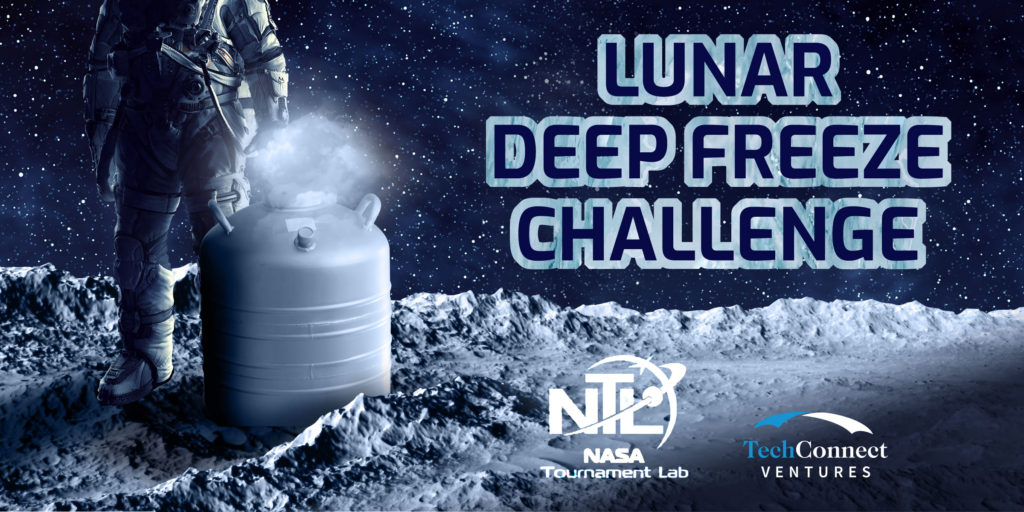
Innovations for Long-Term Cryogenic Stowage & Transportation
In addition to holistic approaches as described in category #1, NASA also has considerable interest in step wise or component solutions with the potential to enable future cryogenic systems for one or more stages of the process. Challenge category #2, therefore, seeks to identify those technologies which can either provide incremental cryogenic solutions or which may have significant value in developing and enabling future small, low-power cryogenic systems.
PERFORMANCE SPECIFICATIONS:
Entries for Challenge category #2 should seek to highlight the unique performance benefits that the proposed technology could provide for use in a future NASA cryogenic stowage and transportation system, including but not limited to any or all of the following:
- Ability to deliver cryogenic temperatures of -150° C or colder.
- Ability to maintain long-term cryogenic temperatures of -150° C or colder.
- Ability to reduce or miniaturize the mass, volume or form factors of a cryogenic system.
- Ability to lower or eliminate power requirements of a cryogenic system.
- Ability to replace active cooling systems with passive cooling systems.
- Ability to increase the duration of time that cooling systems can sustain cryogenic temperatures up to 14 days or beyond.
- Ability to enhance the efficiency or performance of existing cryogenic systems.
Participants are encouraged to discuss the nature and uniqueness of their approach and, wherever possible, to include any (non-confidential) references, product information, scientific rationale, calculations, graphics or drawings in support of their proposal.
DESIGN SPECIFICATIONS:
Participants in Challenge category #2 should consider the following when submitting their entry:
- All solutions must:
- Not include hazardous materials or components
- Be operational within 3-5 years
- For any active solutions,
- Maximum available power at point of use: 75 Watts, or 150W if solution applies only to Gateway
- For any containment units or system-based solutions (active, passive or otherwise),
- Internal dimensions to accommodate lunar sample container:
- Assume sample container will be a cylinder, 20cm diameter, 30 cm long
- Internal dimensions to accommodate lunar sample container:
- Must support at least 1 kg of internal mass
- Total system / unit mass must be less than 20 kg
- 20 kg does not include mass of any lunar samples or sample containers
- For all enabling solutions, technologies, components, materials, etc.
- Be safe for human use
- Be safe for use in an interior, enclosed, crewed environment
- Enable one or more stages of cryogenic containment, stowage and/or transportation within NASA’s specifications
- Provide supporting documentation, calculations, graphics, etc.
POSSIBLE APPROACHES:
Potential solutions for Challenge category #2 are wide-ranging and may include, but are in no way limited to:
- Next-generation cooling, freezing, or cold stowage systems
- Advanced cryogenic materials
- Novel insulating technologies
- Miniaturization solutions
- High-efficiency cooling systems and controls
- Nanotechnology solutions
- Any other relevant solutions
EVALUATION
NASA anticipates that potential solutions for Challenge category #2 will vary considerably based on the nature, scope and maturity of the technologies proposed. All systems, designs, approaches, components and/or materials proposed for this category should strive to provide a clear indication of their unique value for NASA’s cryogenic application, with an emphasis on the overall novelty of the intended approach.
Scoring by the judging panel has been calibrated for the above criteria according to the descriptions provided in the category 2 evaluation criteria.
AWARD
Awards include:
- Total prize pool of US$20,000 available in the form of four (4) US$5,000 winners.
- Winners recognized through published announcements and individual profiles.
- A virtual conference with one or more members of the NASA Challenge team to discuss your winning solution.
Winners may also have the opportunity for future collaboration with NASA.